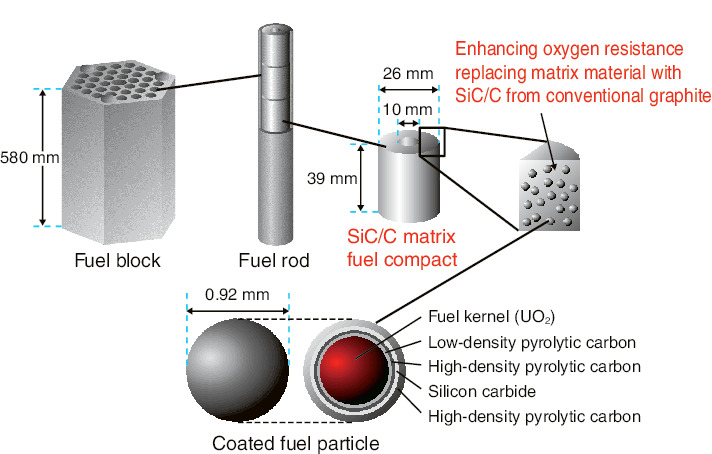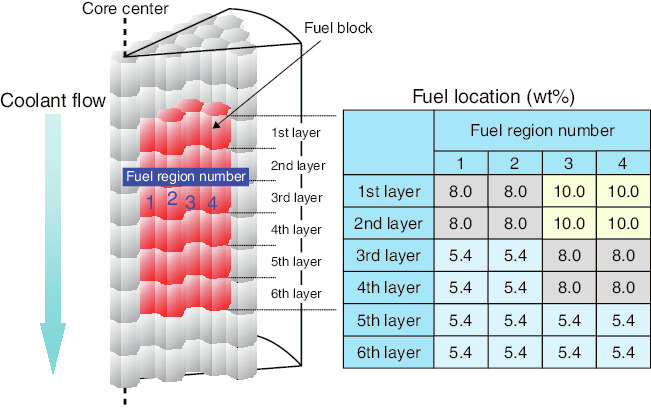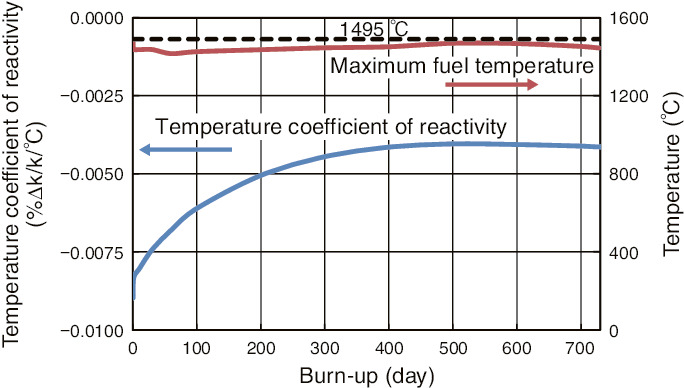
Fig.6-7 HTGR-fuel example with enhanced oxidation resistance

Fig.6-8 Fuel location to optimize power distribution

Fig.6-9 Calculation results for the temperature coefficient of reactivity and the maximum fuel temperature
We are developing an oxidation-resistant fuel (SiC/C-matrix-fuel compact, Fig.6-7), which promises to enhance the safety of High Temperature Gas-cooled Reactors (HTGRs) by maintaining its integrity under air ingress. Such an ingress is considered as a characteristic accident due to pipe rupture, with a large amount of air (beyond any projections) entering into the reactor core. To introduce the SiC/C matrix-fuel compact to the HTGRs, the nuclear and thermal feasibility of the reactor core should be confirmed in addition to establishing fuel-fabrication technology. Nuclear and thermal design was performed for the SiC/C-matrix-fuel-compact-loaded HTGR based on the conceptual design of HTR50S so as to achieve the same performance, namely a 50-MW thermal power and 730-day (2-year) burn-up period.
The most important issues facing the nuclear and thermal design of HTR50S are determination of fuel specifications (such as the degree of enrichment needed for the required period of operation) and optimization of the power distribution to suppress the fuel temperature below the limit during the burn-up period. Silicon, which is included in the SiC/C matrix, more easily yields neutron-capture reactions than graphite and almost fails to moderate neutrons. Owing to these nuclear characteristics, the reactivity of the reactor core decreases when the fuel-compact-matrix material is replaced with SiC/C from conventional graphite. To compensate for the reactivity decrease, the average fuel enrichment was determined to be 1.1wt% higher than the original HTR50S. Optimization of the power distribution was performed using three kinds of fuel enrichment as with the original HTGR50S, and the fuel location was determined as shown in Fig.6-8.
The excess reactivity and power distribution were calculated by performing burn-up calculations with the whole-core model, and the fuel temperature was calculated using the power-distribution results. It was confirmed that the reactor core has enough excess reactivity to operate for 730 days with 50 MW of thermal power, and the fuel temperature is kept below the limit during the burn-up period (Fig.6-9). Additionally, the shutdown margin was confirmed to be larger than 1%Δk/k and it was observed that the reactor could be safely stopped. The temperature coefficient of reactivity was found to have a negative value, leading to a self-stabilizing characteristic. Based on the above results, the nuclear and thermal feasibility of the SiC/C-matrix-fuel-compact-loaded HTGR were confirmed.
The present study was sponsored by the Ministry of Education, Culture, Sports, Science and Technology, Japan (MEXT).